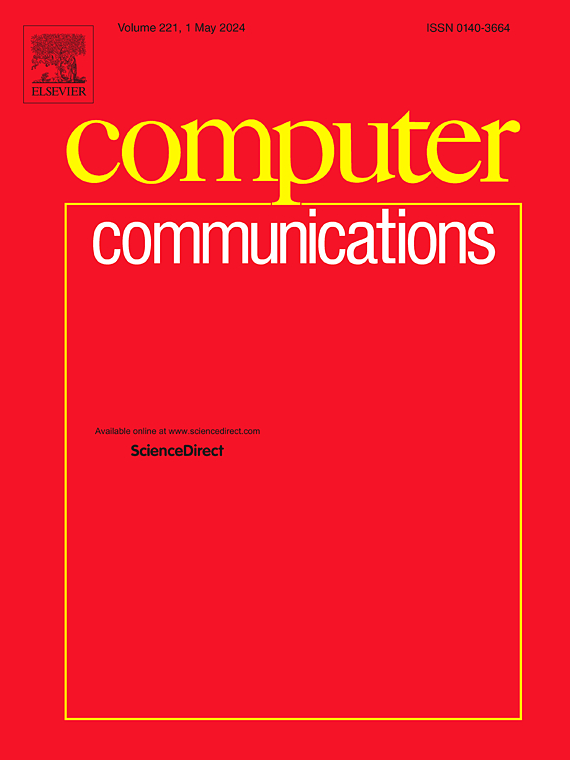基于认知无线电的物联网网络无人机辅助移动边缘计算模型
IF 4.5
3区 计算机科学
Q1 COMPUTER SCIENCE, INFORMATION SYSTEMS
引用次数: 0
摘要
物联网(IoT)在应用程序和部署设备数量方面的爆炸式增长在过去十年中带来了许多挑战。其中最关键的是对频谱资源的需求不断增加,计算和数据处理成本不断增加,能源资源有限。在本文中,我们提出了一个物联网网络模型,该模型结合了认知无线电(CR)、移动边缘计算(MEC)、无人机(uav)和射频能量收集技术,以解决上述挑战。在该模型中,无人机为物联网设备提供计算和能量充电服务。通过利用CR技术,可以通过多个频段请求/交付这些服务。具体来说,目标是根据时间和频率调度任务卸载和能量传输/收集活动,从而最小化物联网设备之间的最大能耗率。用混合整数线性规划的方法求出了这样的调度。我们还提出了一种贪心次最优算法,结果表明它在最优解的≈11%范围内。我们还研究了无人机MEC服务器数量、任务大小、任务卸载成本和任务本地计算成本等几种设置下物联网设备的最大能耗率。本文章由计算机程序翻译,如有差异,请以英文原文为准。
UAV-assisted mobile edge computing model for cognitive radio-based IoT networks
The explosive growth in Internet of Things (IoT) in terms of number of applications and deployed devices has created many challenges over the past decade. Among the most critical of which are the increasing demand on spectrum resources, the growing computation and data processing cost, and the limited energy resources. In this paper, we present a model for IoT networks that incorporates the technologies of cognitive radio (CR), mobile edge computing (MEC), unmanned aerial vehicles (UAVs), and radio-frequency energy harvesting to address the aforementioned challenges. In this model, UAVs provide computation and energy recharging services to IoT devices. These services can be requested/delivered through multiple spectrum bands by exploiting the CR technology. Specifically, aim at scheduling the task offloading and energy transmission/harvesting activities over time and frequency so that the maximum energy consumption rate among IoT devices is minimized. A mixed integer linear program was formulated to find such schedule. A greedy sub-optimal algorithm was also proposed, where our results show that it is within of the optimal solution.
We also investigate the maximum energy consumption rate among IoT devices under several settings regarding number of UAV MEC servers, task size, task offloading cost, and task local computation cost.
求助全文
通过发布文献求助,成功后即可免费获取论文全文。
去求助
来源期刊

Computer Communications
工程技术-电信学
CiteScore
14.10
自引率
5.00%
发文量
397
审稿时长
66 days
期刊介绍:
Computer and Communications networks are key infrastructures of the information society with high socio-economic value as they contribute to the correct operations of many critical services (from healthcare to finance and transportation). Internet is the core of today''s computer-communication infrastructures. This has transformed the Internet, from a robust network for data transfer between computers, to a global, content-rich, communication and information system where contents are increasingly generated by the users, and distributed according to human social relations. Next-generation network technologies, architectures and protocols are therefore required to overcome the limitations of the legacy Internet and add new capabilities and services. The future Internet should be ubiquitous, secure, resilient, and closer to human communication paradigms.
Computer Communications is a peer-reviewed international journal that publishes high-quality scientific articles (both theory and practice) and survey papers covering all aspects of future computer communication networks (on all layers, except the physical layer), with a special attention to the evolution of the Internet architecture, protocols, services, and applications.
 求助内容:
求助内容: 应助结果提醒方式:
应助结果提醒方式:


